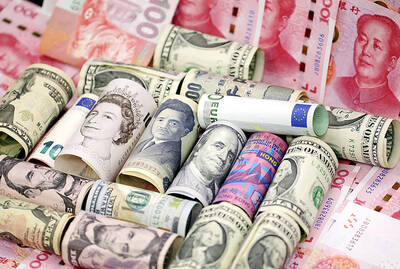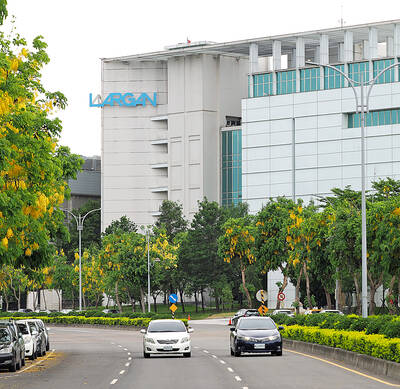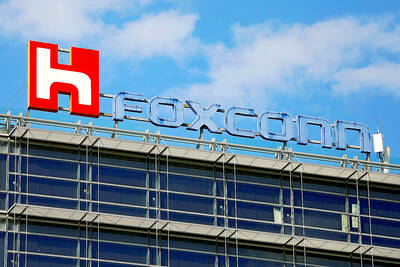New housing prices in the Greater Taipei area and Taoyuan last quarter rose to their highest level in three years, on the back of investment and asset allocation needs, the Chinese-language Housing Monthly reported yesterday.
Interest rate cuts and sufficient liquidity helped neutralize headwinds caused by the COVID-19 pandemic, allowing for new housing prices to pick up in Taipei, New Taipei City and Taoyuan, while prices held steady in Hsinchu and declined in Keelung and Yilan, the magazine said.
Taipei prices rose 2 percent from three months earlier to NT$870,000 (US$29,455.58) per ping (3.3m2), their highest since 2018, even though the pandemic had dampened buying interest in April and early May.
Housing Monthly research manager Ho Shih-chang (何世昌) attributed the price increase to investment and asset allocation needs, after global central banks lowered interest rates to near zero to ward off a credit crunch and to ease financial burdens on companies and households.
Taiwan’s central bank cut its policy rate to a record low of 1.125 percent in March.
New Taipei City prices grew just 0.3 percent to NT$393,000 per ping, also a three-year peak, Housing Monthly said.
Buying interest gained noticeable momentum in the rezoning areas of Sindian (新店) and Banciao (板橋) districts, while projects in less popular quarters weighed on the average, it said.
Taoyuan prices increased 1.3 percent to NT$231,000 per ping, the strongest in three years, and a 1.8 percent advance if compared with a year earlier, it said.
Prices held steady in Hsinchu with some projects in the eastern part rising above the NT$300,000 mark per ping, it said.
Affluent high-tech engineers lent support to the market and a lack of new supply led some developers to raise prices between NT$280,000 and NT$320,000 per ping, it added.
Prices in Keelung and Yilan bucked the trend, falling 1.4 percent and 0.5 percent respectively from the preceding quarter, it said.
However, the price correction in Yilan is likely to end soon, given the small pace of retreat, while prices are consolidating in Keelung, where buyers are refusing to increase them, Ho said.
The liquidity-driven rallies may continue for a while as central banks around the world introduce more quantitative easing to combat sudden and deep economic downturns, Ho added.

Taiwan’s foreign exchange reserves hit a record high at the end of last month, surpassing the US$600 billion mark for the first time, the central bank said yesterday. Last month, the country’s foreign exchange reserves rose US$5.51 billion from a month earlier to reach US$602.94 billion due to an increase in returns from the central bank’s portfolio management, the movement of other foreign currencies in the portfolio against the US dollar and the bank’s efforts to smooth the volatility of the New Taiwan dollar. Department of Foreign Exchange Director-General Eugene Tsai (蔡炯民)said a rate cut cycle launched by the US Federal Reserve

Handset camera lens maker Largan Precision Co (大立光) on Sunday reported a 6.71 percent year-on-year decline in revenue for the third quarter, despite revenue last month hitting the highest level in 11 months. Third-quarter revenue was NT$17.68 billion (US$581.2 million), compared with NT$18.95 billion a year earlier, the company said in a statement. The figure was in line with Yuanta Securities Investment Consulting Co’s (元大投顧) forecast of NT$17.9 billion, but missed the market consensus estimate of NT$18.97 billion. The third-quarter revenue was a 51.44 percent increase from NT$11.67 billion in the second quarter, as the quarter is usually the peak

Nvidia Corp’s major server production partner Hon Hai Precision Industry Co (鴻海精密) reported 10.99 percent year-on-year growth in quarterly sales, signaling healthy demand for artificial intelligence (AI) infrastructure. Revenue totaled NT$2.06 trillion (US$67.72 billion) in the last quarter, in line with analysts’ projections, a company statement said. On a quarterly basis, revenue was up 14.47 percent. Hon Hai’s businesses cover four primary product segments: cloud and networking, smart consumer electronics, computing, and components and other products. Last quarter, “cloud and networking products delivered strong growth, components and other products demonstrated significant growth, while smart consumer electronics and computing products slightly declined,” compared with the

The US government on Wednesday sanctioned more than two dozen companies in China, Turkey and the United Arab Emirates, including offshoots of a US chip firm, accusing the businesses of providing illicit support to Iran’s military or proxies. The US Department of Commerce included two subsidiaries of US-based chip distributor Arrow Electronics Inc (艾睿電子) on its so-called entity list published on the federal register for facilitating purchases by Iran’s proxies of US tech. Arrow spokesman John Hourigan said that the subsidiaries have been operating in full compliance with US export control regulations and his company is discussing with the US Bureau of